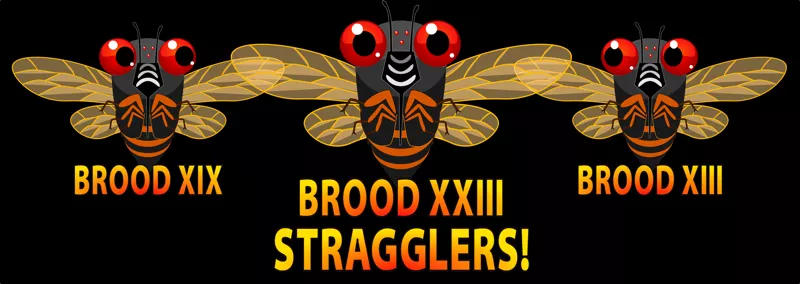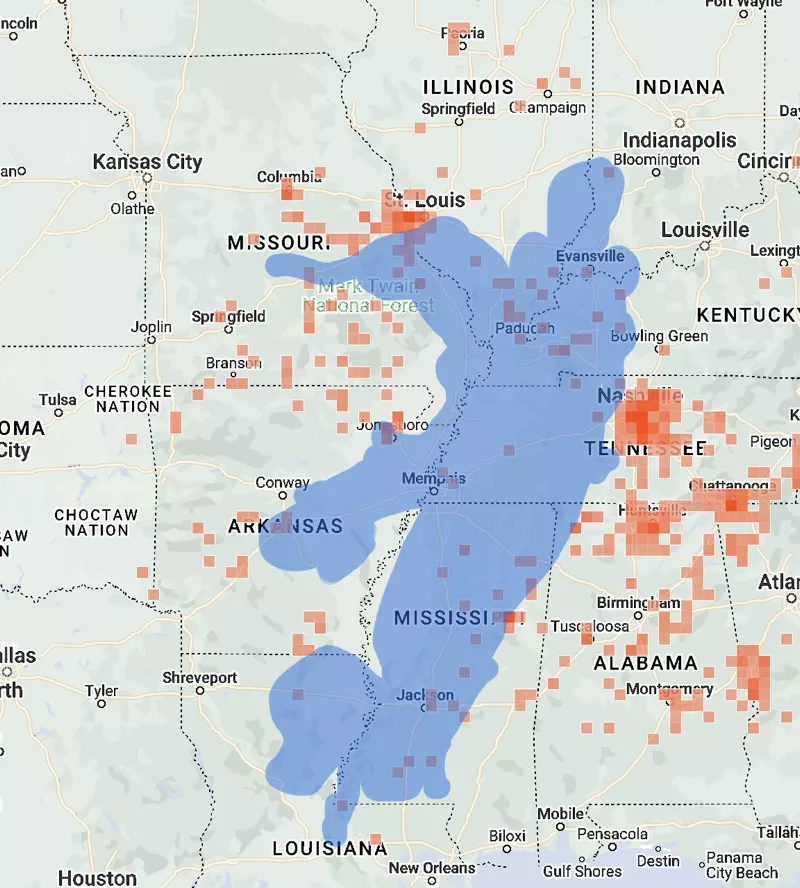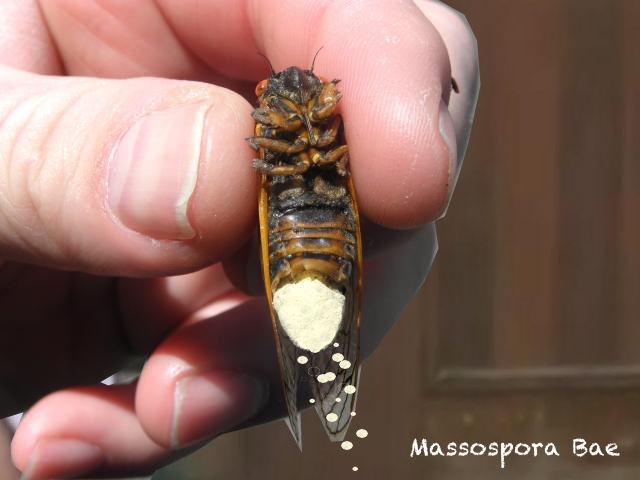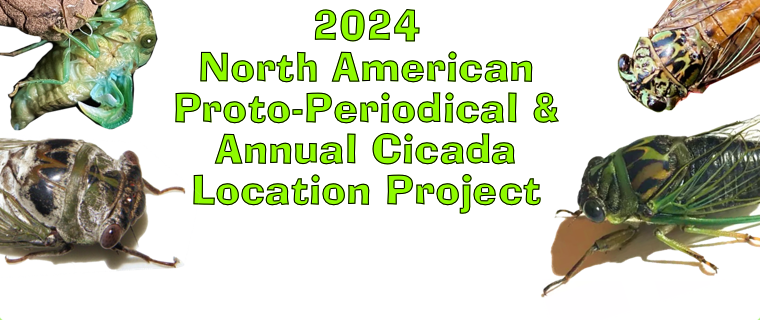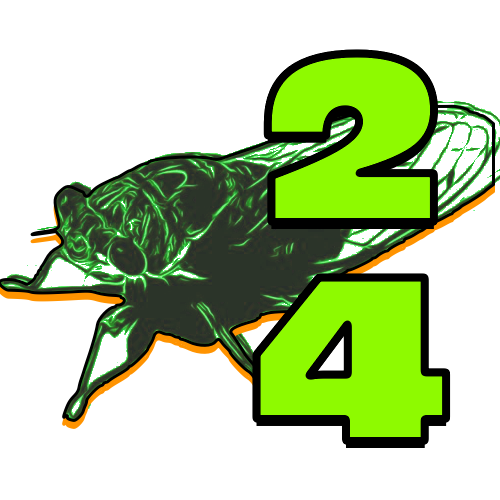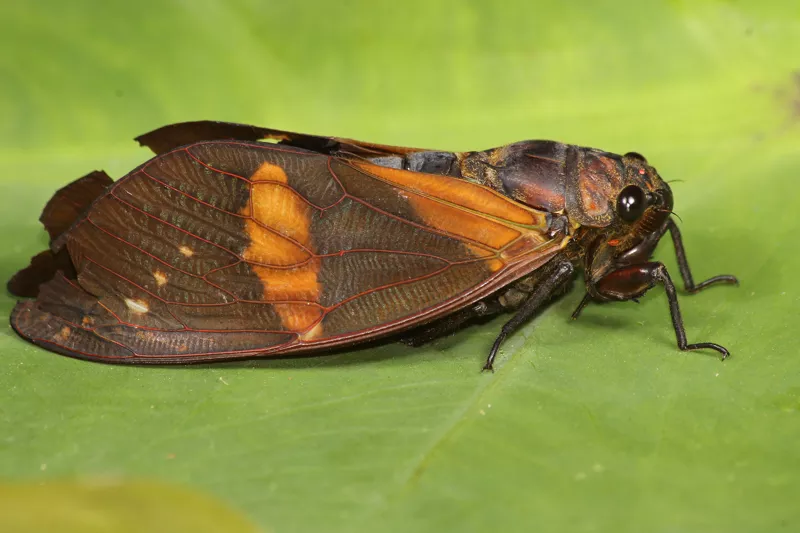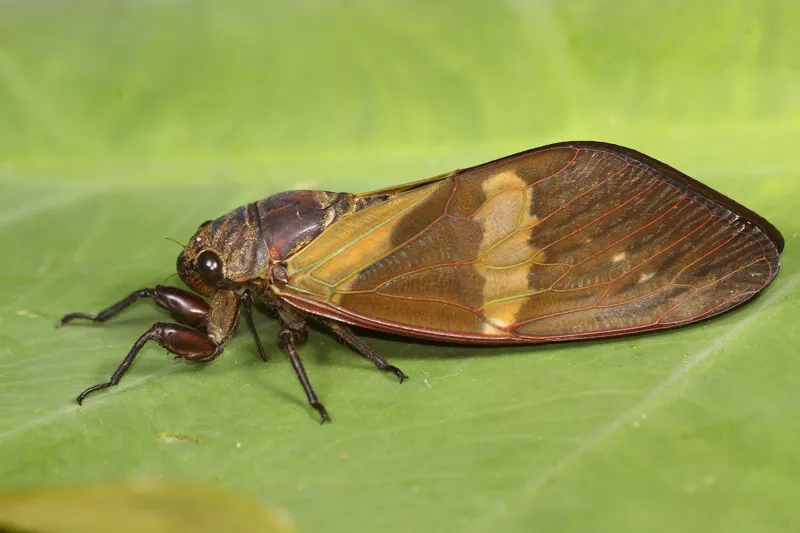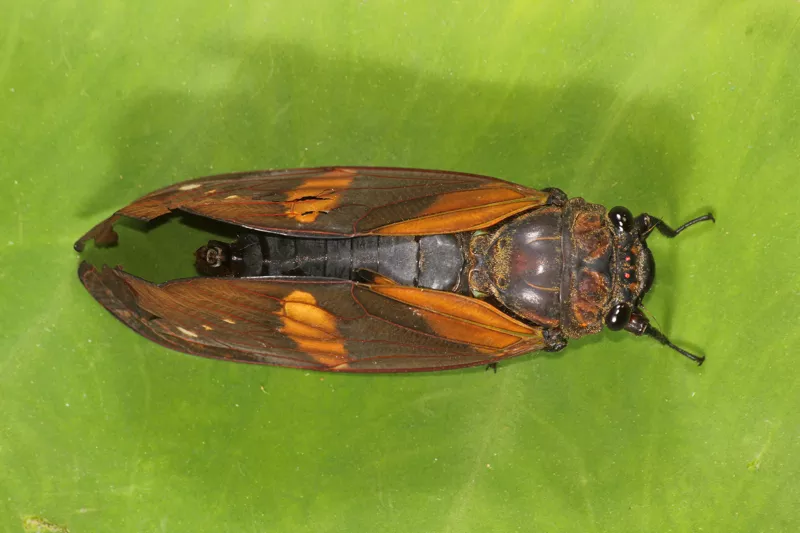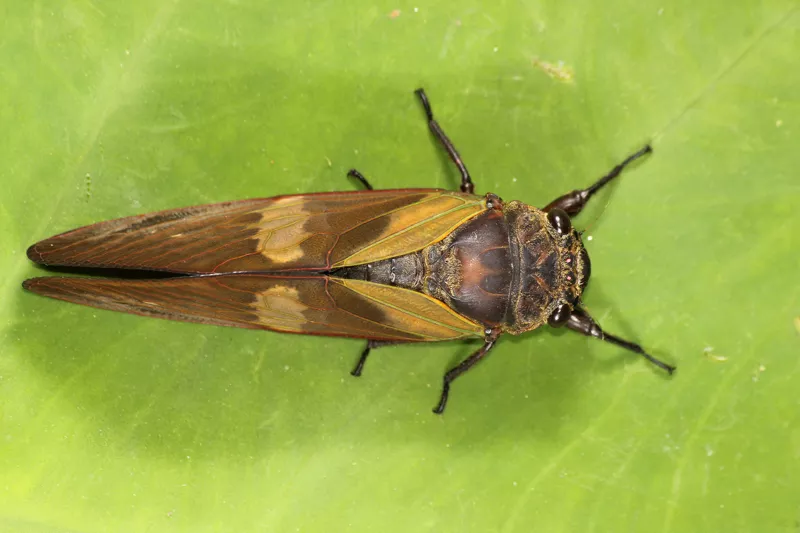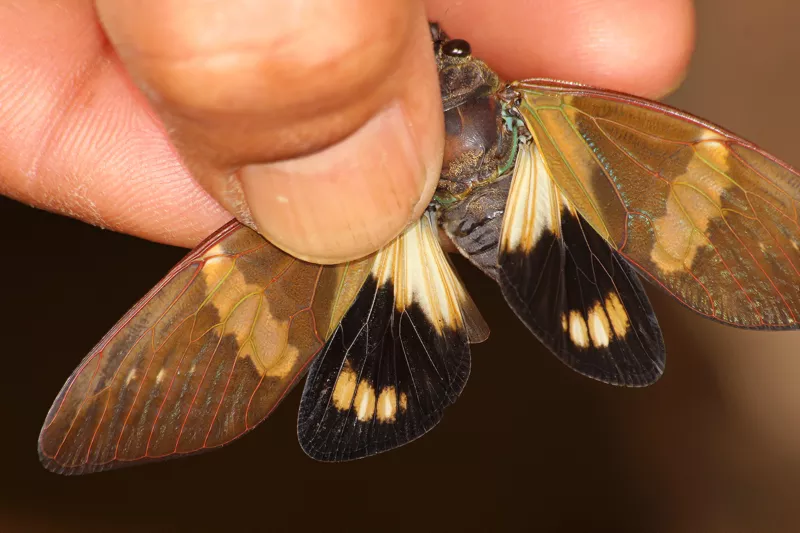The Lesser Antilles Cicada aka Chalumalna martinesis is a cicada found in the Lesser Antilles islands, for certain in Saint Martin (see sightings on iNaturalist).
Cicada researcher Allen Sanborn has a new paper titled Redescription, illustration and higher taxonomy of the Lesser Antilles cicada Chalumalna martinesis Boulard, 2001 (Hemiptera: Cicadidae: Cicadettinae).
This paper is of particular interest as it places Chalumalna martinesis this cicada in the Trible Lamotialnini, which is the same Trible as Magicicada periodical cicadas found un the U.S.
From the Abstract:
The genus Chalumalna is reassigned to Lamotialnini Boulard, 1976 based on the presence of conjunctival claws on the aedeagus and the lack of a developed uncus. Brevialavenosa Sanborn, 2021 and Chrysolasia Moulds, 2003 are shown to be members of Lamotialnini as well, expanding the tribal distribution to include the Caribbean, South and Central America.

